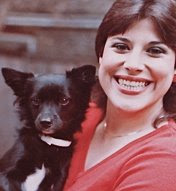 One of the great things about doing online book promotion, is meeting and networking with so many dedicated, interesting pet parents. Today, I'd like you to meet:
One of the great things about doing online book promotion, is meeting and networking with so many dedicated, interesting pet parents. Today, I'd like you to meet:LAURIE LUCK took her first obedience class about fifteen years ago. She was just in it for fun, looking for a way to develop a relationship with her newly adopted Australian Shepherd, Freckles. As luck would have it, the class they signed up for was a clicker training course. Laurie didn’t know anything about positive reinforcement training, but she and Freckles were willing to try it. It turned out that the two of them loved the class. In Laurie’s own words, Freckles excelled and made Laurie look like she knew what she was doing. After a few more classes, the instructor asked Laurie if she’d like to assist, and in no time Laurie fell in love with teaching other people how to get along with their dogs.
“When I first started working as a trainer, clicker training wasn’t a mainstream training method. Marine mammal trainers had been using it successfully for years, but it was relatively new to the dog training profession. Change is difficult for people and many were reluctant to change their styles. I hadn’t been using the old fashioned correction-based training long enough to be committed to it, so the switch was natural for me.
I was in my clients’ shoes 15 years ago. I had never used a clicker and didn’t know what it was or how it worked. I struggled with a dog who lost her concentration easily. A dog who found it much more fun to run after a deer than to come to me. A dog who found smells on the ground much more interesting than the sound of my voice. I’ve been there, I have real empathy for what my clients are going through.
I realized that clicker training was easier and faster than the old fashioned corrections-based training. And it meant I could be friends with my dog, celebrating all our accomplishments, not looking for the next mistake and quickly correcting her without faltering. It was more fun to work with my dog using the clicker because we were focused on what she was doing correctly, and ignoring the mistakes.”

To find out more about positive reinforcement training please go to:
Laurie Luck holds a master's degree in psychology, is a faculty member of the Karen Pryor Academy for Animal Training and Behavior, and is skilled both as a trainer and teacher. She founded Smart Dog University in 2001 to help owners improve their dogs behavior.
DO YOU HAVE AN EXPERIENCE WITH CLICKER TRAINING? PLEASE LEAVE A COMMENT!
DO YOU HAVE AN EXPERIENCE WITH CLICKER TRAINING? PLEASE LEAVE A COMMENT!







































